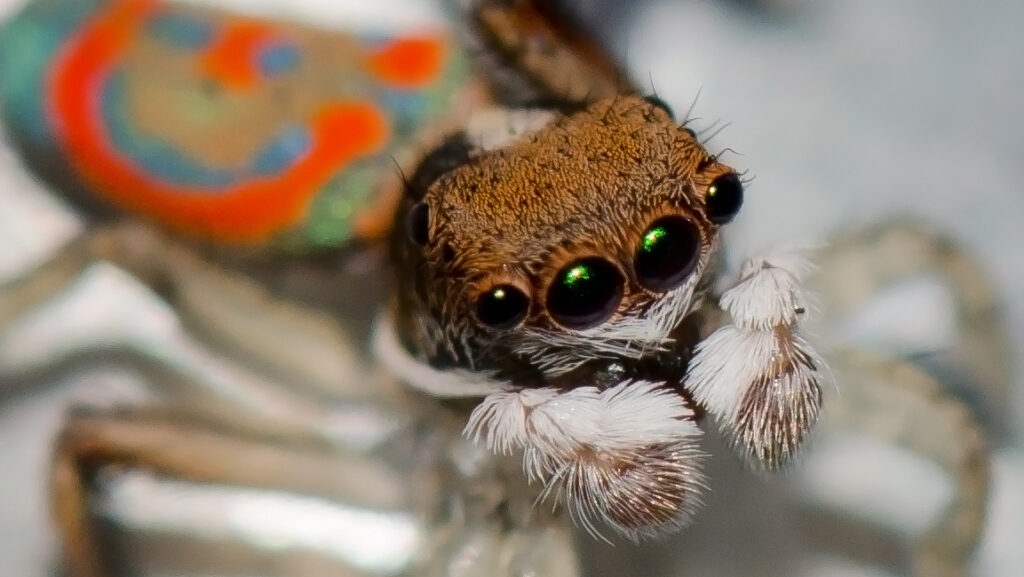Picture this: a spider no bigger than your fingernail transforms into one of nature’s most spectacular performers, lifting its abdomen high like a brilliant flag while its legs move in perfect rhythm. This isn’t science fiction – it’s the remarkable world of peacock spiders, where survival depends on putting on the show of a lifetime. These tiny Australian natives have revolutionized our understanding of animal courtship, proving that size doesn’t matter when it comes to creating pure magic in the natural world.
The Miniature Marvels That Captivated Science
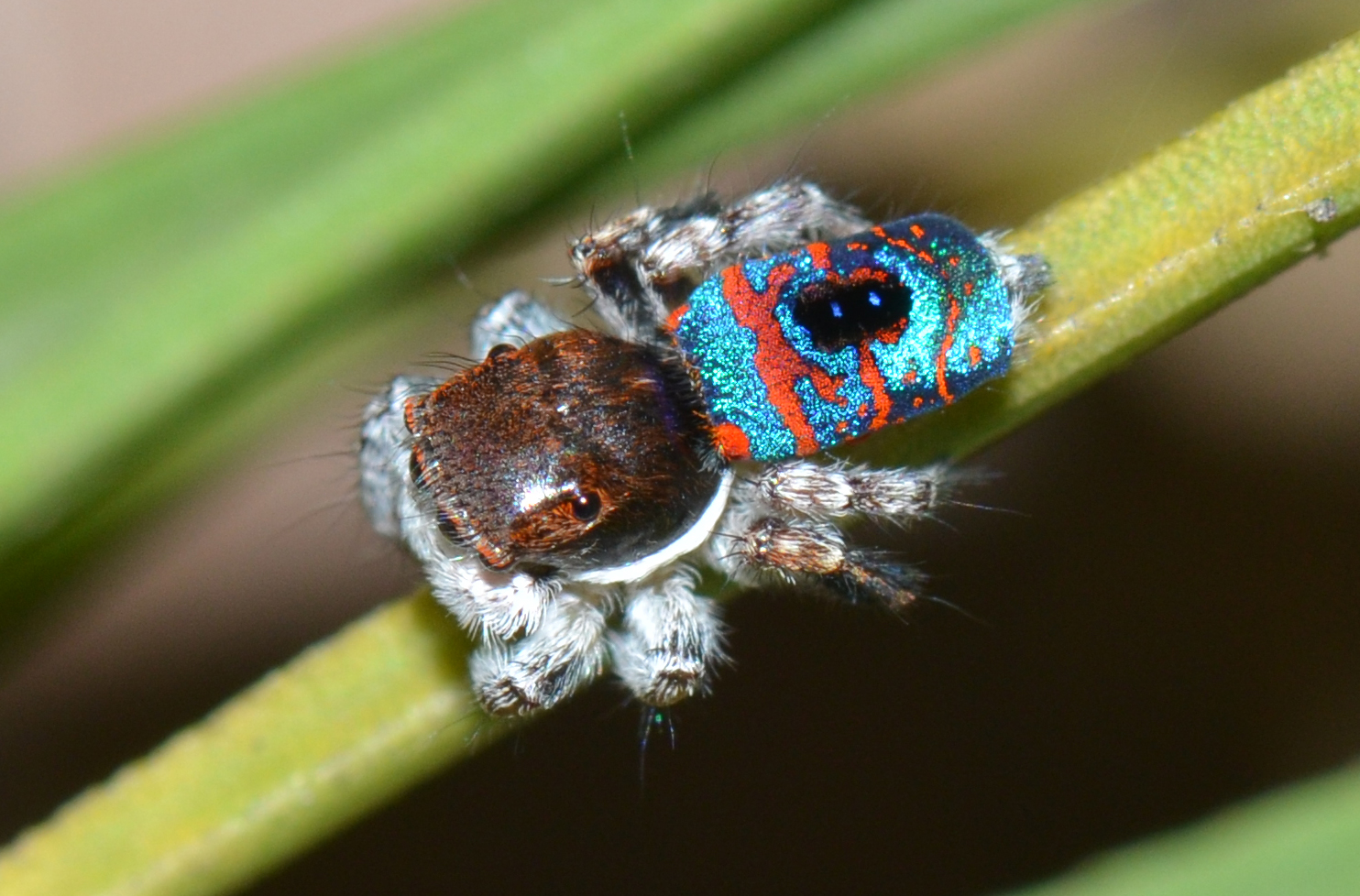
Peacock spiders belong to the jumping spider family Salticidae, but they’ve carved out their own legendary status in the scientific community. These microscopic performers measure just 4 to 5 millimeters in length, making them smaller than most ants you’d find in your backyard. What they lack in size, they absolutely make up for in personality and visual impact.
The genus Maratus contains over 100 described species, with new ones being discovered regularly across Australia. Each species boasts its own unique color patterns and dance moves, like having a entire Broadway cast in spider form. Scientists have been studying these creatures intensively since the early 2000s, when high-quality macro photography finally revealed their true splendor to the world.
A Rainbow in Eight Legs
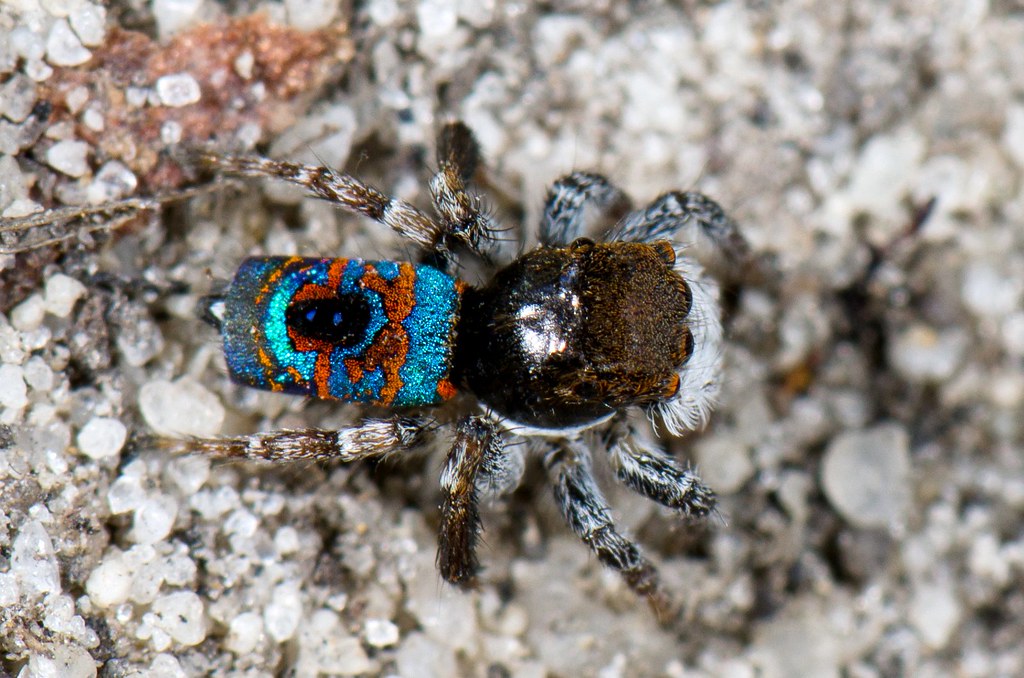
The male peacock spider’s coloration puts tropical birds to shame with its intensity and variety. Their abdomens display iridescent blues, vibrant oranges, electric greens, and deep purples that seem to glow from within. These aren’t just pretty decorations – they’re sophisticated optical structures that manipulate light like tiny biological prisms.
The colors come from specialized scales that contain microscopic structures called multilayer reflectors. These work similarly to soap bubbles, bending and reflecting light waves to create those mesmerizing metallic sheens. Some species even have patterns that look like alien landscapes or abstract art, with geometric designs that would make any graphic designer jealous.
Female peacock spiders, in contrast, wear more subdued earth tones that help them blend into their surroundings. This stark difference between sexes tells us everything we need to know about who’s doing the pursuing in this relationship.
The Architecture of Attraction
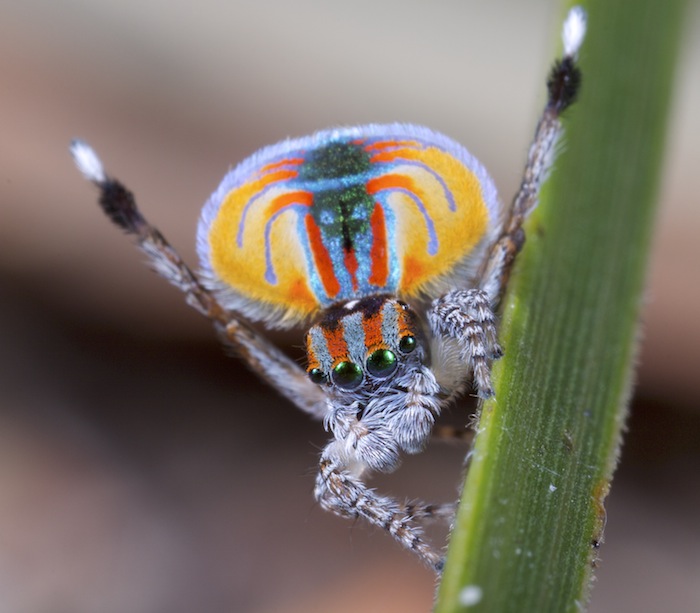
Beyond their stunning colors, male peacock spiders possess specialized body parts designed specifically for courtship displays. Their third pair of legs often features colorful patches, fringes, or even feather-like structures that they wave like flags during their performances. These legs can move independently, creating complex visual patterns that change with every gesture.
Some species have developed fan-like flaps on their abdomens that they can raise and lower like peacock feathers – hence their common name. Others sport strange appendages that look like tiny antennae or brushes, each serving a specific purpose in their elaborate mating rituals.
The male’s enlarged front legs aren’t just for show either. They’re packed with muscles that allow for precise, controlled movements during the dance, turning these spiders into eight-legged choreographers of the highest caliber.
When Dancing Becomes a Matter of Life and Death
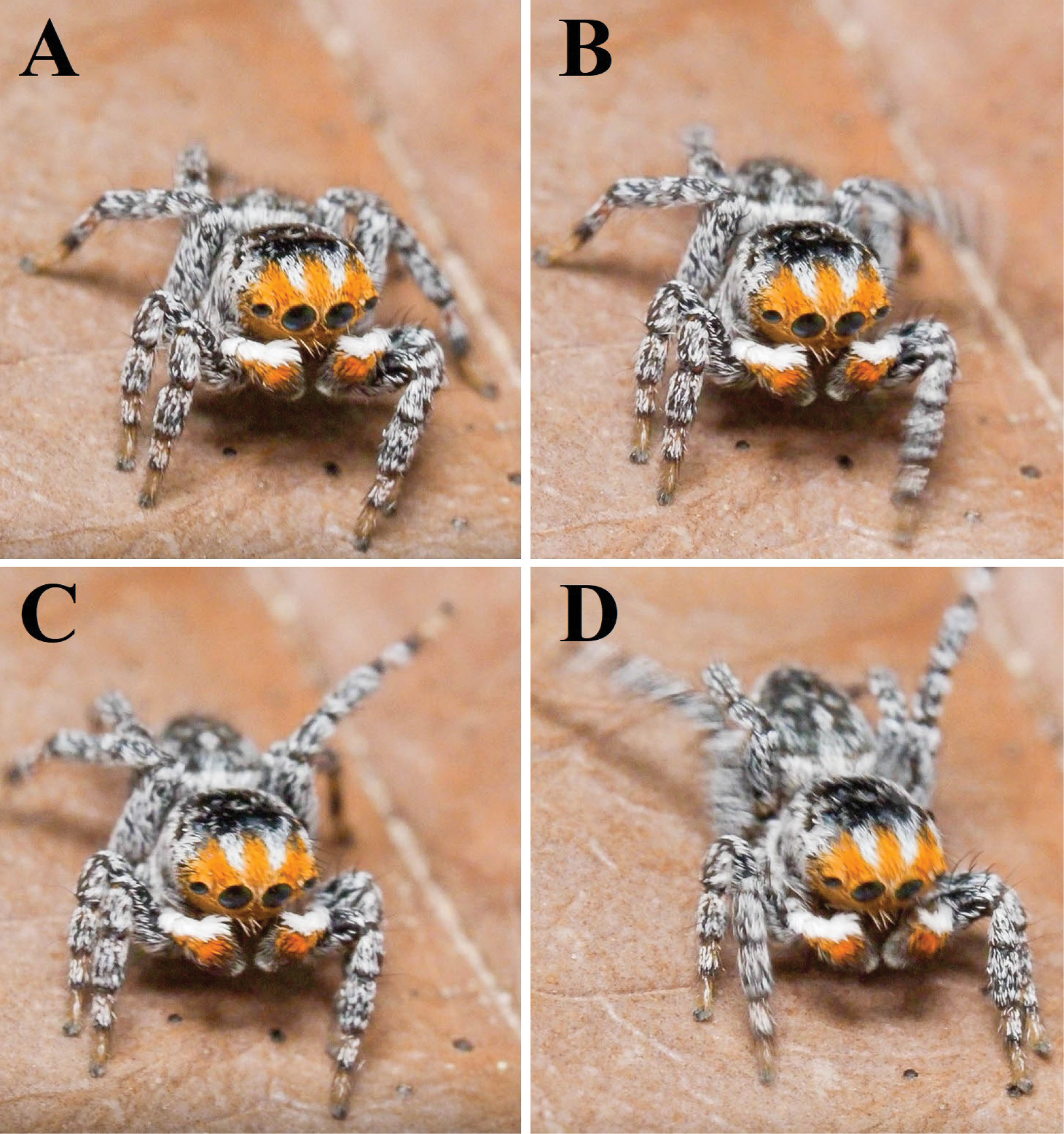
For male peacock spiders, courtship isn’t just about finding a mate – it’s about surviving the encounter. Female peacock spiders are notorious for their aggressive nature, and they won’t hesitate to attack and eat a male who fails to impress them. This high-stakes scenario has driven the evolution of increasingly elaborate courtship displays.
The male must approach the female with extreme caution, using his dance to communicate his intentions from a safe distance. If she shows interest, he can slowly move closer while continuing his performance. However, if she remains unimpressed or hostile, he must be ready to leap away in an instant – jumping spiders can leap up to 50 times their body length.
This dangerous game of seduction has created one of nature’s most intense performance pressures. Only the most skilled dancers get to pass on their genes, while mediocre performers become lunch.
The Choreography of Survival
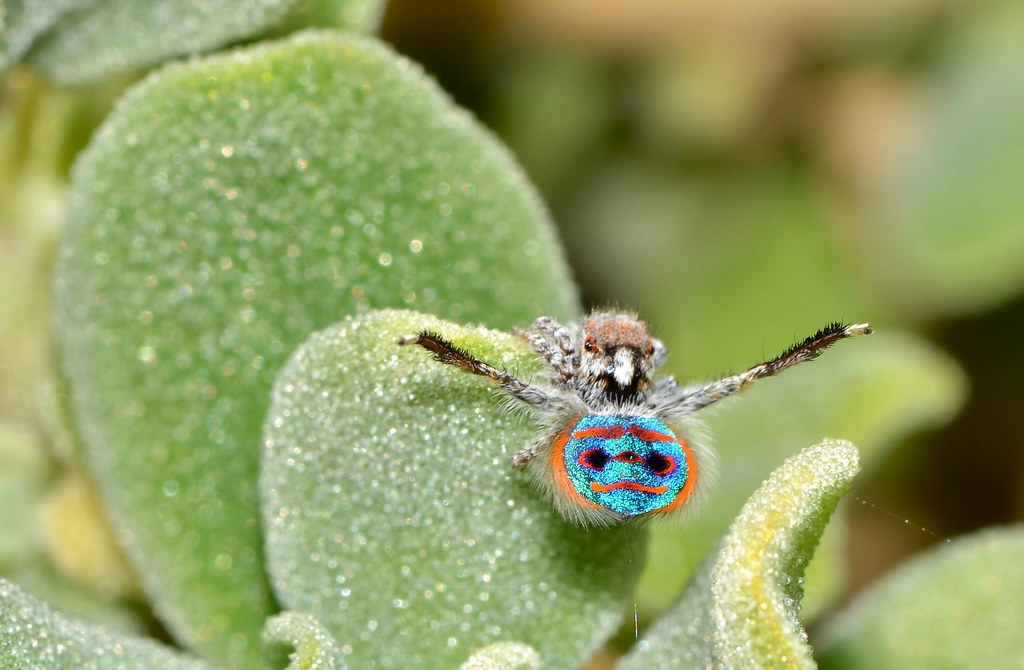
Each peacock spider species has developed its own signature dance moves, like different schools of martial arts. Some perform rapid side-to-side movements that make their colorful abdomens flash like strobe lights. Others prefer slow, hypnotic wave-like motions that showcase their intricate patterns.
The famous Maratus volans performs what scientists call the “paddle dance,” where the male raises his abdomen high and waves his colorful leg flaps in alternating patterns. Meanwhile, Maratus pavonis incorporates dramatic leg extensions and rapid color changes that create a dizzying visual display.
These dances aren’t random – they’re precisely timed sequences that can last anywhere from a few seconds to several minutes. The male must read the female’s body language constantly, adjusting his performance based on her reactions and level of interest.
The Science Behind the Spectacle
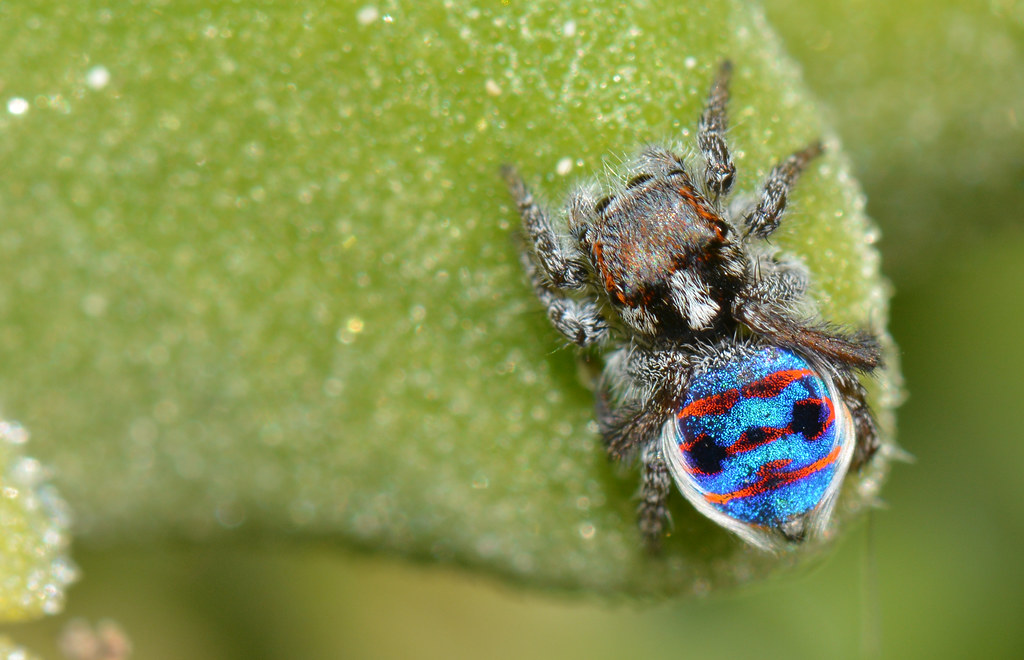
Recent research has revealed that peacock spider courtship involves much more than visual displays. Males also produce subtle vibrations through the ground and air, creating a multi-sensory experience that scientists are only beginning to understand. These vibrations are so faint that specialized equipment is needed to detect them.
The spiders’ excellent vision plays a crucial role in their courtship success. They possess some of the sharpest eyesight in the invertebrate world, with four pairs of eyes that can detect movement, judge distances, and distinguish colors with remarkable precision. This visual acuity allows them to fine-tune their displays and respond to the smallest changes in their partner’s behavior.
Scientists have discovered that the complexity of these displays correlates with the spiders’ cognitive abilities. The more elaborate the dance, the more sophisticated the spider’s nervous system appears to be.
Masters of Mimicry and Deception
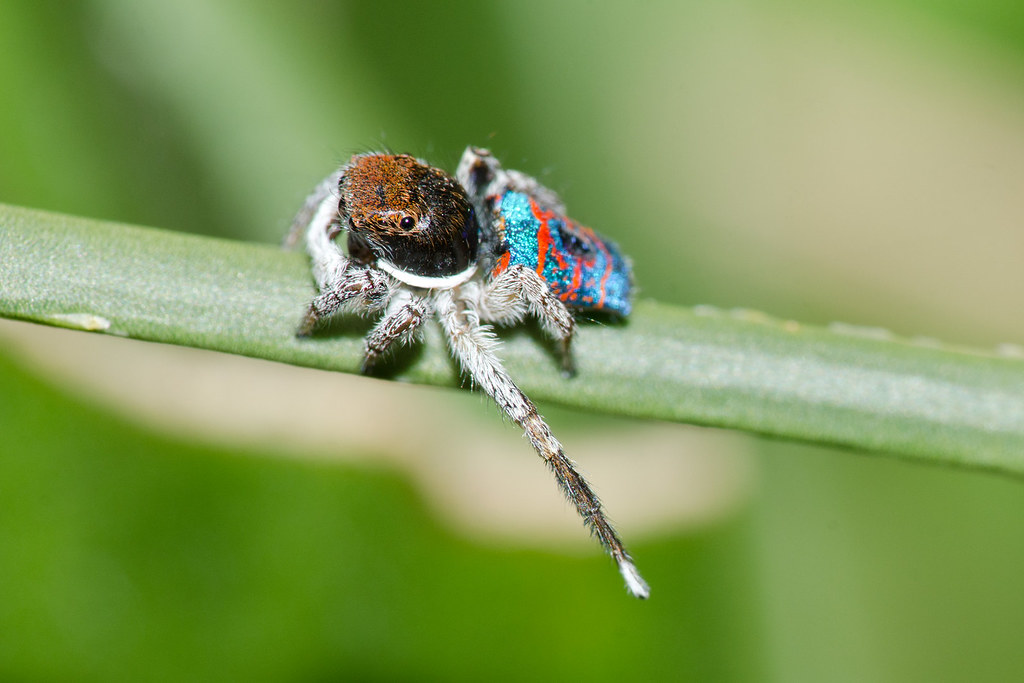
Some peacock spider species have evolved to mimic other creatures in their environment, adding another layer of complexity to their courtship strategies. Certain species display patterns that resemble the eyes of much larger predators, potentially intimidating rivals or confusing potential threats.
Others have developed color patterns that mimic flowers or other attractive objects in their habitat. This camouflage helps them avoid predators while also potentially attracting prey items that mistake them for something harmless.
The evolutionary arms race between different species has led to an incredible diversity of deceptive strategies, with each population developing unique adaptations to their specific environment and predator pressures.
The Female’s Perspective
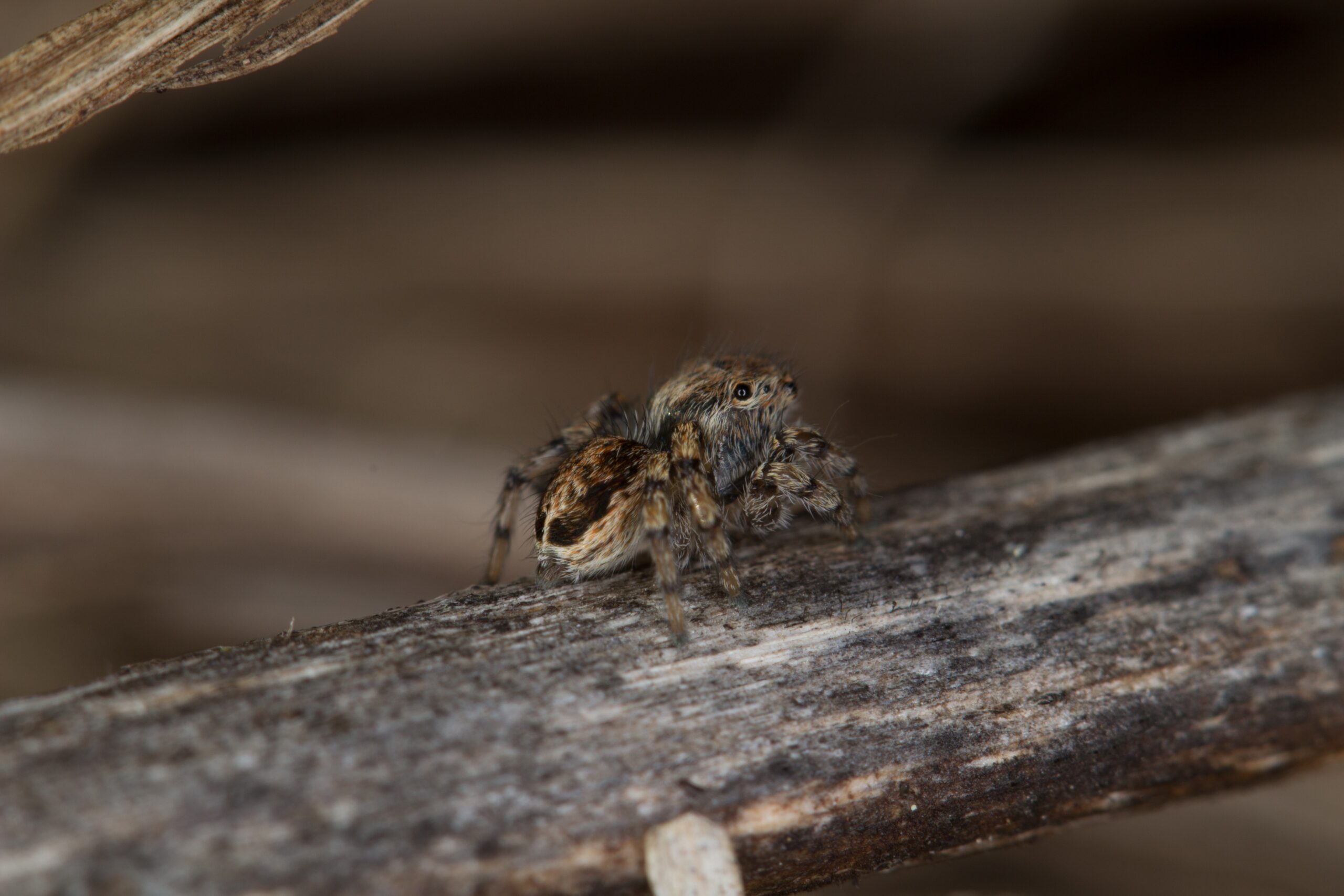
While males get most of the attention for their flashy displays, female peacock spiders are equally fascinating in their own right. They’re the ultimate judges, using sophisticated criteria to evaluate potential mates that go far beyond simple visual appeal. Females assess the male’s physical condition, coordination, persistence, and genetic quality through his dance performance.
A female peacock spider can distinguish between subtle variations in male displays that would be invisible to human observers. She’s looking for signs of health, vigor, and genetic fitness that will benefit her offspring. Poor dancers often indicate poor genes, so females have evolved to be extremely selective.
Interestingly, female preferences can vary between populations of the same species, leading to rapid evolutionary changes in male display traits. This process, called sexual selection, is one of the driving forces behind the incredible diversity we see in peacock spider courtship behaviors.
Habitat and Hunting Strategies
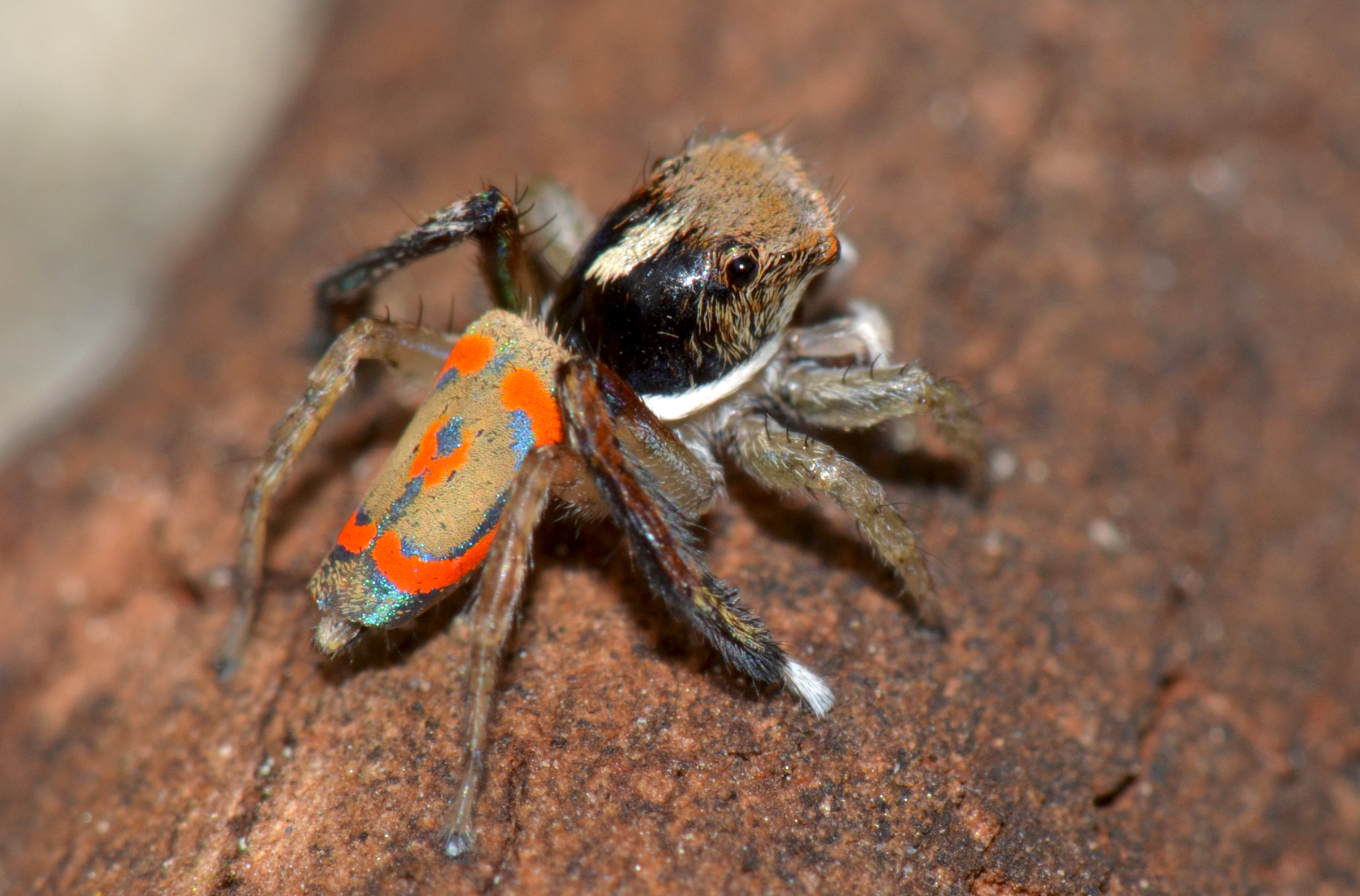
Peacock spiders inhabit a wide range of environments across Australia, from coastal sand dunes to inland forests and even urban gardens. Each species has adapted to specific microhabitats, with some preferring leaf litter while others hunt on tree bark or among rocks.
Despite their reputation for elaborate courtship displays, peacock spiders are formidable predators. They’re active hunters that stalk their prey with the patience of a cat and the precision of a sniper. Their excellent vision allows them to spot potential meals from several body lengths away.
These spiders don’t build webs to catch prey. Instead, they rely on their incredible jumping ability to ambush insects, small arthropods, and even other spiders. Their hunting success rate is remarkably high, partly due to their ability to calculate precise trajectories and timing.
The Role of Photography in Discovery
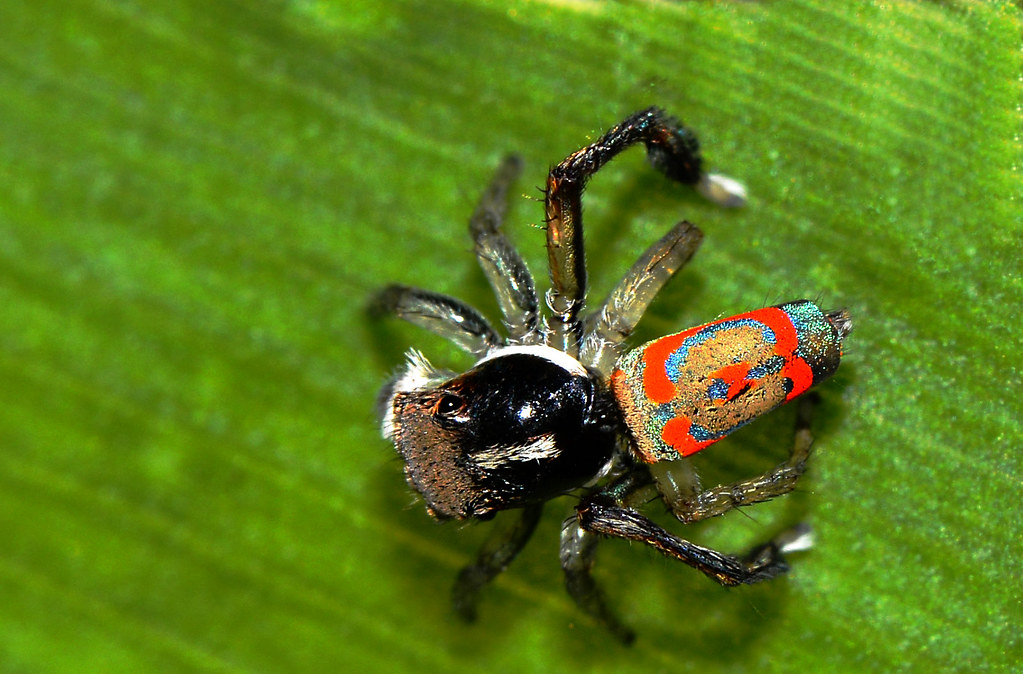
The explosion of interest in peacock spiders can be traced directly to advances in macro photography and video technology. Before high-resolution cameras became widely available, these tiny creatures were largely overlooked by both scientists and the general public. Their true beauty remained hidden in plain sight.
Pioneering photographers like Jürgen Otto revolutionized our understanding of these spiders by capturing their displays in stunning detail. His videos of peacock spider courtship dances went viral on social media, sparking widespread fascination with these previously unknown creatures.
Today, citizen scientists armed with smartphones and macro lenses are discovering new species and documenting behaviors that professional researchers might never have observed. This democratization of scientific discovery has accelerated peacock spider research exponentially.
Conservation Challenges in a Changing World
Despite their recent fame, many peacock spider species face serious conservation threats. Their small size and specialized habitat requirements make them particularly vulnerable to environmental changes. Urban development, climate change, and habitat fragmentation pose significant risks to these tiny performers.
Some species are known from only a single location, making them extremely vulnerable to local extinctions. The loss of even small patches of habitat can wipe out entire populations before scientists have a chance to study them properly.
Conservation efforts are complicated by the fact that many species remain undescribed, and their exact habitat requirements are poorly understood. Protecting peacock spiders requires a landscape-level approach that preserves the complex ecological relationships they depend on.
The Evolutionary Arms Race

The evolution of peacock spider courtship displays represents one of nature’s most intense evolutionary arms races. As females become more selective, males must develop increasingly elaborate displays to capture their attention. This feedback loop has driven the rapid evolution of new colors, patterns, and behaviors.
The speed of this evolutionary process is remarkable. Some populations show significant differences in display traits over just a few generations, suggesting that sexual selection pressure is extraordinarily strong in these species.
This rapid evolution has practical implications for conservation. It means that isolated populations can quickly develop into distinct species, increasing the overall diversity of peacock spiders but also creating more conservation targets that need protection.
Lessons from the Smallest Performers
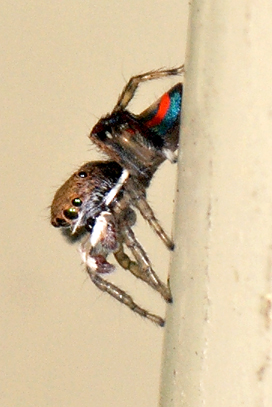
Peacock spiders teach us that complexity and beauty aren’t reserved for large, charismatic animals. These microscopic performers demonstrate that evolution can create sophisticated behaviors and stunning visual displays in even the smallest creatures. Their courtship rituals rival anything seen in the bird world for complexity and artistry.
The study of peacock spiders has also revealed new insights into animal cognition and behavior. These tiny creatures process visual information, make complex decisions, and execute coordinated movements that suggest far more sophisticated nervous systems than anyone previously imagined.
Perhaps most importantly, peacock spiders remind us that our planet is full of undiscovered wonders. Every garden, every patch of bushland, every seemingly ordinary place might be home to creatures as remarkable as any found in the most exotic locations on Earth.
The Future of Peacock Spider Research
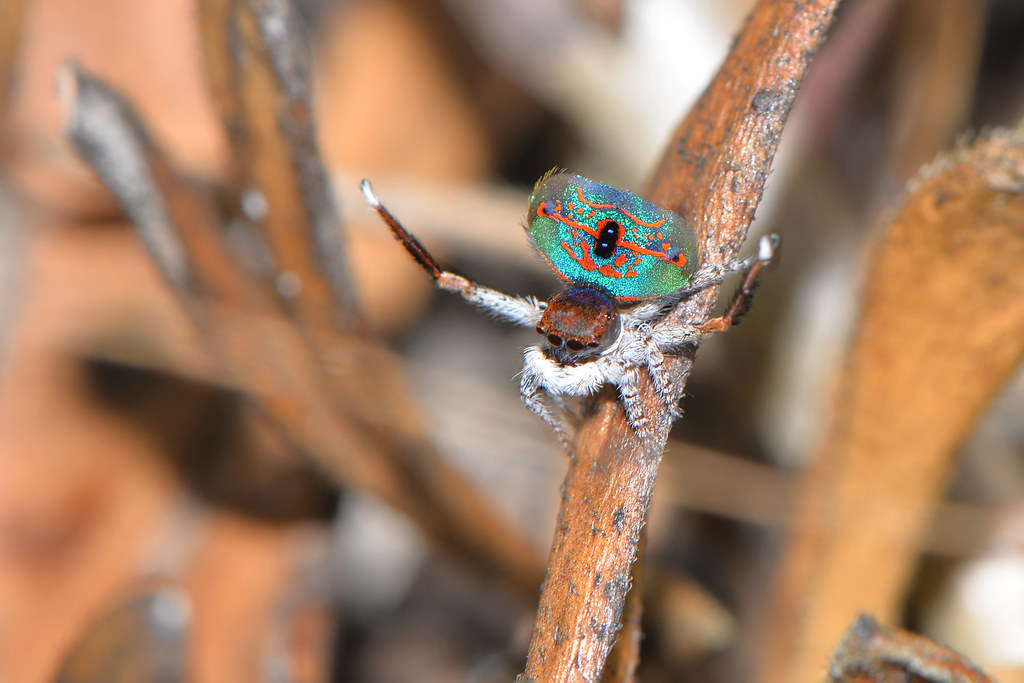
Scientists are just beginning to unlock the secrets of peacock spider biology and behavior. Advanced imaging techniques are revealing new details about their optical structures, while genetic studies are untangling the evolutionary relationships between different species.
Researchers are also investigating the potential applications of peacock spider innovations. Their optical structures could inspire new materials for displays or solar panels, while their precise jumping mechanisms might inform robotics design.
The next decade promises to bring exciting discoveries as technology continues to advance and more researchers turn their attention to these charismatic micro-performers. Each new finding adds another piece to the puzzle of how these remarkable creatures evolved their spectacular abilities.
The peacock spider’s dance represents far more than a simple mating ritual – it’s a masterpiece of evolution, a testament to nature’s creativity, and a reminder that wonder exists all around us in the smallest packages. These tiny performers have captured our imagination and revolutionized our understanding of animal behavior, proving that size truly doesn’t matter when it comes to making a lasting impression. As we continue to explore and protect their habitats, we ensure that future generations will have the chance to witness these spectacular displays of color and courtship. What other microscopic marvels might be performing their own secret shows right under our noses?

